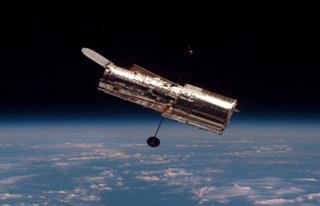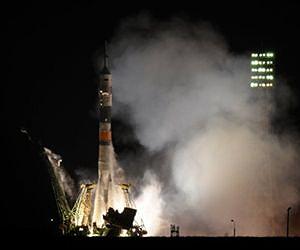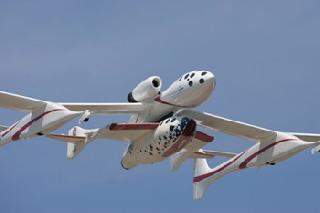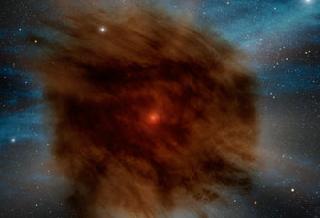Patriot
Senior Member
- Joined
- Apr 11, 2010
- Messages
- 1,761
- Likes
- 544
Lost Asian satellites send powerful signals
By Peter J Brown
During the second half of 2010 all three Asian space powers - China, India and Japan - suffered major satellite failures. Each failure is significant, but for different reasons. In this instance, the satellite failures will be addressed in chronological order.
At the same time, it must be emphasized that satellite failures happen rarely.
What makes the loss of India's Insat-4B in early July - the first Asian satellite on this list - so important is the possibility that the satellite fell victim to deliberate act of sabotage as the result of a cyber attack. This involves the very malicious "Stuxnet" worm.
The official line is that a power supply
problem stemming from a faulty solar panel was the culprit.
Others wonder if while everyone was speculating about the impact of a Stuxnet-based cyber attack on an Iranian nuclear facility, an Indian satellite was rendered useless by the same sinister software code. At least, that is the theory.
Security technologist and author Bruce Schneier described Stuxnet in the following way.
"Stuxnet is an Internet worm that infects Windows computers. It primarily spreads via USB sticks
, which allows it to get into computers and networks not normally connected to the Internet. Once inside a network, it uses a variety of mechanisms to propagate to other machines within that network and gain privilege once it has infected those machines," said Schneier. [1]
If it turns out that Insat-4B met its demise because someone hacked the satellite's control system software or hacked software inside an Indian ground control station in a two-step attack, this is a very sobering moment for the global satellite industry.
Stuxnet began to surface at around the exact same time that Insat-4B went on the blink. By the way. Stuxnet is known to target industrial control systems.
The Indian Space Research Organization (ISRO) had already lost one communications satellite earlier in 2010. In April, ISRO lost the GSAT-4 communications satellite after ISRO's GSLV-D3 rocket malfunctioned. An earlier GSLV series rocket failure took place in 2006, destroying the INSAT-4C satellite. So, the loss of Insat-4B which was launched in early 2007 put satellite TV service providers along with other users in India in a very difficult spot.
In late September, cyberwarfare expert and author Jeffrey Carr, who is a Forbes magazine contributor and the CEO of Taia Global, wrote on the Forbes "Firewall" blog that the loss of Insat-4B can be traced to specific purchases made by ISRO which unbeknownst to ISRO set the silent and destructive effects of Stuxnet in motion.
"According to the resumes of two former engineers who worked at the ISRO's Liquid Propulsion Systems Center, the Siemens software in use is Siemens S7-400 PLC and SIMATIC WinCC, both of which will activate the Stuxnet worm," said Carr. "I uncovered this information as part of my background research for a paper that I am presenting at the Black Hat Abu Dhabi [computer security] conference in November. My objective for that presentation will be to provide an analytic model for determining attribution in cases like Stuxnet. My objective for this post is simply to show that there are more and better theories to explain Stuxnet's motivation than just Israel and Iran, as others have posited." [2]
Carr also described how so many customers who relied on Insat-4B ended up on the ASIASAT-5 satellite , and that, "AsiaSat's two primary shareholders are General Electric and China International Trust and Investment Co. (CITIC)," which is a Chinese state-owned company.
As the size and scope of the Stuxnet phenomenon becomes more widely understood, experts are stunned by the growing presence in India where "infections" were rampant in late September. [3]
Two weeks after the Insat-4B failure, ISRO activated Cartosat-2B - its latest remote sensing satellite - which offers high-resolution imagery via a panchromatic camera. It has functioned flawlessly thus far as it orbits approximately 630 kilometers above the earth. This demonstrates that ISRO was launching and operating other new satellites without any problems during the same time period.
Satellite communications and satellite surveillance are two different thing entirely. Spy satellites are increasing in number over Asia, and they are much more powerful than their predecessors.
In late August, the Japanese government reported that it lost its only operational synthetic aperture radar (SAR)-equipped surveillance satellite. Japan still maintains a fleet of three optical spy satellites. So, in bad weather or when night comes, Japan cannot conduct its own satellite surveillance operations.
Here again a power supply failure was the primary contributor to the satellite malfunction in question. Was there a Stuxnet connection? Thus far, malevolent software or a worm has not been mentioned as a potential source of the problem. But in late 2010, it cannot be ruled out entirely.
A significant window has now closed in Japan and while a replacement satellite may appear late next year in the form of a new prototype or test platform, a full compliment of surveillance satellites is not expected until well after 2013 at the earliest. The latest launch of a Japanese spy satellite was in November 2009. [4]
When Japan lost its first SAR satellite in 2007, also to a power failure, it briefly triggered a wave of domestic soul-searching in the highest circles of the Japanese government. Now, more than 3 years later, Japan's dependence on the US - absent a suitable alternative partner which, of course, could well be India. - and upon imagery generated by US commercial earth observation satellites in particular is not a controversial subject.
As 2010 comes to an end, however, anxiety is bound to intensify in Tokyo and disputes in the Diet [parliament] may erupt thanks to a new report from the Washington, DC-based Institute for Science and International Security which includes satellite imagery of a North Korean nuclear site. DigitalGlobe, a US-based satellite operator, is the source of the imagery. [5]
This satellite imagery and the circumstances in which the Japanese now find themselves due to the loss of Japan's only radar satellite - and the absence of any redundancy - coincides with questionable activity at this North Korean nuclear site. Add it all up and it could prove to be a very disruptive situation for the Japanese government.
On the other hand, this makes the announcement by the Japanese Ministry of Defense concerning the possible acquisition of three unmanned US Global Hawk reconnaissance aircraft perhaps easier to digest by the Japanese people as a whole.
These Global Hawk robotic spy planes will greatly enhance Japan's ability to conduct surveillance operations over land and sea. They will also enable Japan to develop its own innovative satellite-based surveillance architectures, while providing a means to watch North Korea closely.
While this Global Hawk procurement may also bring about a resurgence of support for another Japanese attempt to obtain advanced US F-22 fighter aircraft - "Why do they give us Global Hawks, but not F-22's?" - it may alter the process that guides Japan's creation and deployment of intelligence-gathering satellites and bring about a larger, more flexible and more diverse satellite fleet. [6]
In China, the loss of another satellite is also impacting what is seen - on people's TV sets.
In early September, Chinasat-6A also known as Zhongxing 6A, ZX 6A, Sinosat-6, or Xinnuo 6 suffered a helium pressurization problem immediately after launch. This affected the operation and control of the satellite's onboard fuel tank. For its owner, China Satellite Communications Corp of Beijing, it means that uncertainty about the operational status and projected life span of this new satellite is going to linger for some time.
So, although China did not "lose" a satellite here in a technical sense, the setback is severe enough to warrant its consideration here for several reasons.
Chinasat-6A is one of the Chinese-built DFH-4 series. These satellites have experienced complete failures in the past. Indeed, the record of success for the DFH-4 to date is remarkably slim. Chinasat-6A unlike Sinosat 2 and Nigeria's Nigcomsat-1 - earlier DFH-4 failures - is not crippled by a solar array - related problem. [7]
The questionable status of this satellite not only affects its users, but also China's satellite exports. The DFH-4 has been China's preferred export satellite, and the malfunction does not bode well for business overseas at a time when China is aggressively seeking satellite partners abroad.
Back at home, planning and policy-making across the complete satellite TV and TV infrastructure of China as a whole could be affected by this satellite glitch. Among other things, it could become a factor in China's efforts to curb illegal satellite TV.
For months, China has discussed possibly ceasing crackdowns in the future on the owners of unauthorized or illegal satellite dishes which some say now number 60 million or more. China Satellite Communications (China Satcom) has played a role in this process. China's only authorized domestic satellite TV service for households, China Satcom began offering many free satellite TV channels last year.
"Since our service launched, most of the illegal DTH viewers have turned their dishes away from foreign satellites and onto our domestic platform," said Huang Baozhong, vice president of China Satcom. "This helps the Chinese government with propaganda control."
The loss of Chinasat-6A may be inconsequential or it could adversely impact the supply domestic satellite capacity to the point that it provides opponents of reform with the excuse to postpone or delay the imposition of new rules and regulations.
And whereas provincial broadcasters might have been able to bypass links to either Beijing and Shanghai as part of their broadcast operations, here again, reduced satellite capacity might cast a shadow over this proposed transition. [8]
At the same time, discussions about censorship and propaganda control in China involving foreign media and satellite TV channels available heated up considerably in early October following Premier Wen Jiabao's latest interview with CNN's Fareed Zakaria.
Because Wen seems eager to champion political reform in China - some openly question his sincerity - and speaks of "the continuous progress of China," the fact that millions of Chinese satellite TV viewers had no opportunity to view the interview in question can only set the stage for storminess in the form of a clash of opposing viewpoints. [9]
Who will prevail remains to be seen, but the absence or a significant shortage of satellite capacity - even when artificially inflated - is a barrier unto itself and might serve the purposes of those who wish not to open the door entirely in China today. Thus, Chinasat-6A could emerge as a useful prop on the stage of domestic politics.
Finally, there has been widespread speculation about a very controversial Chinese satellite loss last January. Last summer, China was accused of shooting down one of its satellites in January, a repeat of its 2007 satellite shootdown although this time without all the fanfare.
"It was a large test which needs time to prepare for," said Peng Guangqian, a Beijing-based military expert. "If confirmed, I think it was a further step for China to improve its defensive ability in space." [10]
The fate of that satellite is something that Beijing refuses to verify despite the fact that there is no real element of secrecy involved.
The vast majority of satellites perform solidly, round-the-clock in a reliable fashion that is a source of pride for their builders. Thus, these lost Asian satellites represent the exception not the rule. Still, whether viewed as the victims of isolated mishaps or not, these errant satellites still send out powerful signals.
Asia Times Online :: China News, China Business News, Taiwan and Hong Kong News and Business.
By Peter J Brown
During the second half of 2010 all three Asian space powers - China, India and Japan - suffered major satellite failures. Each failure is significant, but for different reasons. In this instance, the satellite failures will be addressed in chronological order.
At the same time, it must be emphasized that satellite failures happen rarely.
What makes the loss of India's Insat-4B in early July - the first Asian satellite on this list - so important is the possibility that the satellite fell victim to deliberate act of sabotage as the result of a cyber attack. This involves the very malicious "Stuxnet" worm.
The official line is that a power supply
problem stemming from a faulty solar panel was the culprit.
Others wonder if while everyone was speculating about the impact of a Stuxnet-based cyber attack on an Iranian nuclear facility, an Indian satellite was rendered useless by the same sinister software code. At least, that is the theory.
Security technologist and author Bruce Schneier described Stuxnet in the following way.
"Stuxnet is an Internet worm that infects Windows computers. It primarily spreads via USB sticks
, which allows it to get into computers and networks not normally connected to the Internet. Once inside a network, it uses a variety of mechanisms to propagate to other machines within that network and gain privilege once it has infected those machines," said Schneier. [1]
If it turns out that Insat-4B met its demise because someone hacked the satellite's control system software or hacked software inside an Indian ground control station in a two-step attack, this is a very sobering moment for the global satellite industry.
Stuxnet began to surface at around the exact same time that Insat-4B went on the blink. By the way. Stuxnet is known to target industrial control systems.
The Indian Space Research Organization (ISRO) had already lost one communications satellite earlier in 2010. In April, ISRO lost the GSAT-4 communications satellite after ISRO's GSLV-D3 rocket malfunctioned. An earlier GSLV series rocket failure took place in 2006, destroying the INSAT-4C satellite. So, the loss of Insat-4B which was launched in early 2007 put satellite TV service providers along with other users in India in a very difficult spot.
In late September, cyberwarfare expert and author Jeffrey Carr, who is a Forbes magazine contributor and the CEO of Taia Global, wrote on the Forbes "Firewall" blog that the loss of Insat-4B can be traced to specific purchases made by ISRO which unbeknownst to ISRO set the silent and destructive effects of Stuxnet in motion.
"According to the resumes of two former engineers who worked at the ISRO's Liquid Propulsion Systems Center, the Siemens software in use is Siemens S7-400 PLC and SIMATIC WinCC, both of which will activate the Stuxnet worm," said Carr. "I uncovered this information as part of my background research for a paper that I am presenting at the Black Hat Abu Dhabi [computer security] conference in November. My objective for that presentation will be to provide an analytic model for determining attribution in cases like Stuxnet. My objective for this post is simply to show that there are more and better theories to explain Stuxnet's motivation than just Israel and Iran, as others have posited." [2]
Carr also described how so many customers who relied on Insat-4B ended up on the ASIASAT-5 satellite , and that, "AsiaSat's two primary shareholders are General Electric and China International Trust and Investment Co. (CITIC)," which is a Chinese state-owned company.
As the size and scope of the Stuxnet phenomenon becomes more widely understood, experts are stunned by the growing presence in India where "infections" were rampant in late September. [3]
Two weeks after the Insat-4B failure, ISRO activated Cartosat-2B - its latest remote sensing satellite - which offers high-resolution imagery via a panchromatic camera. It has functioned flawlessly thus far as it orbits approximately 630 kilometers above the earth. This demonstrates that ISRO was launching and operating other new satellites without any problems during the same time period.
Satellite communications and satellite surveillance are two different thing entirely. Spy satellites are increasing in number over Asia, and they are much more powerful than their predecessors.
In late August, the Japanese government reported that it lost its only operational synthetic aperture radar (SAR)-equipped surveillance satellite. Japan still maintains a fleet of three optical spy satellites. So, in bad weather or when night comes, Japan cannot conduct its own satellite surveillance operations.
Here again a power supply failure was the primary contributor to the satellite malfunction in question. Was there a Stuxnet connection? Thus far, malevolent software or a worm has not been mentioned as a potential source of the problem. But in late 2010, it cannot be ruled out entirely.
A significant window has now closed in Japan and while a replacement satellite may appear late next year in the form of a new prototype or test platform, a full compliment of surveillance satellites is not expected until well after 2013 at the earliest. The latest launch of a Japanese spy satellite was in November 2009. [4]
When Japan lost its first SAR satellite in 2007, also to a power failure, it briefly triggered a wave of domestic soul-searching in the highest circles of the Japanese government. Now, more than 3 years later, Japan's dependence on the US - absent a suitable alternative partner which, of course, could well be India. - and upon imagery generated by US commercial earth observation satellites in particular is not a controversial subject.
As 2010 comes to an end, however, anxiety is bound to intensify in Tokyo and disputes in the Diet [parliament] may erupt thanks to a new report from the Washington, DC-based Institute for Science and International Security which includes satellite imagery of a North Korean nuclear site. DigitalGlobe, a US-based satellite operator, is the source of the imagery. [5]
This satellite imagery and the circumstances in which the Japanese now find themselves due to the loss of Japan's only radar satellite - and the absence of any redundancy - coincides with questionable activity at this North Korean nuclear site. Add it all up and it could prove to be a very disruptive situation for the Japanese government.
On the other hand, this makes the announcement by the Japanese Ministry of Defense concerning the possible acquisition of three unmanned US Global Hawk reconnaissance aircraft perhaps easier to digest by the Japanese people as a whole.
These Global Hawk robotic spy planes will greatly enhance Japan's ability to conduct surveillance operations over land and sea. They will also enable Japan to develop its own innovative satellite-based surveillance architectures, while providing a means to watch North Korea closely.
While this Global Hawk procurement may also bring about a resurgence of support for another Japanese attempt to obtain advanced US F-22 fighter aircraft - "Why do they give us Global Hawks, but not F-22's?" - it may alter the process that guides Japan's creation and deployment of intelligence-gathering satellites and bring about a larger, more flexible and more diverse satellite fleet. [6]
In China, the loss of another satellite is also impacting what is seen - on people's TV sets.
In early September, Chinasat-6A also known as Zhongxing 6A, ZX 6A, Sinosat-6, or Xinnuo 6 suffered a helium pressurization problem immediately after launch. This affected the operation and control of the satellite's onboard fuel tank. For its owner, China Satellite Communications Corp of Beijing, it means that uncertainty about the operational status and projected life span of this new satellite is going to linger for some time.
So, although China did not "lose" a satellite here in a technical sense, the setback is severe enough to warrant its consideration here for several reasons.
Chinasat-6A is one of the Chinese-built DFH-4 series. These satellites have experienced complete failures in the past. Indeed, the record of success for the DFH-4 to date is remarkably slim. Chinasat-6A unlike Sinosat 2 and Nigeria's Nigcomsat-1 - earlier DFH-4 failures - is not crippled by a solar array - related problem. [7]
The questionable status of this satellite not only affects its users, but also China's satellite exports. The DFH-4 has been China's preferred export satellite, and the malfunction does not bode well for business overseas at a time when China is aggressively seeking satellite partners abroad.
Back at home, planning and policy-making across the complete satellite TV and TV infrastructure of China as a whole could be affected by this satellite glitch. Among other things, it could become a factor in China's efforts to curb illegal satellite TV.
For months, China has discussed possibly ceasing crackdowns in the future on the owners of unauthorized or illegal satellite dishes which some say now number 60 million or more. China Satellite Communications (China Satcom) has played a role in this process. China's only authorized domestic satellite TV service for households, China Satcom began offering many free satellite TV channels last year.
"Since our service launched, most of the illegal DTH viewers have turned their dishes away from foreign satellites and onto our domestic platform," said Huang Baozhong, vice president of China Satcom. "This helps the Chinese government with propaganda control."
The loss of Chinasat-6A may be inconsequential or it could adversely impact the supply domestic satellite capacity to the point that it provides opponents of reform with the excuse to postpone or delay the imposition of new rules and regulations.
And whereas provincial broadcasters might have been able to bypass links to either Beijing and Shanghai as part of their broadcast operations, here again, reduced satellite capacity might cast a shadow over this proposed transition. [8]
At the same time, discussions about censorship and propaganda control in China involving foreign media and satellite TV channels available heated up considerably in early October following Premier Wen Jiabao's latest interview with CNN's Fareed Zakaria.
Because Wen seems eager to champion political reform in China - some openly question his sincerity - and speaks of "the continuous progress of China," the fact that millions of Chinese satellite TV viewers had no opportunity to view the interview in question can only set the stage for storminess in the form of a clash of opposing viewpoints. [9]
Who will prevail remains to be seen, but the absence or a significant shortage of satellite capacity - even when artificially inflated - is a barrier unto itself and might serve the purposes of those who wish not to open the door entirely in China today. Thus, Chinasat-6A could emerge as a useful prop on the stage of domestic politics.
Finally, there has been widespread speculation about a very controversial Chinese satellite loss last January. Last summer, China was accused of shooting down one of its satellites in January, a repeat of its 2007 satellite shootdown although this time without all the fanfare.
"It was a large test which needs time to prepare for," said Peng Guangqian, a Beijing-based military expert. "If confirmed, I think it was a further step for China to improve its defensive ability in space." [10]
The fate of that satellite is something that Beijing refuses to verify despite the fact that there is no real element of secrecy involved.
The vast majority of satellites perform solidly, round-the-clock in a reliable fashion that is a source of pride for their builders. Thus, these lost Asian satellites represent the exception not the rule. Still, whether viewed as the victims of isolated mishaps or not, these errant satellites still send out powerful signals.
Asia Times Online :: China News, China Business News, Taiwan and Hong Kong News and Business.
















